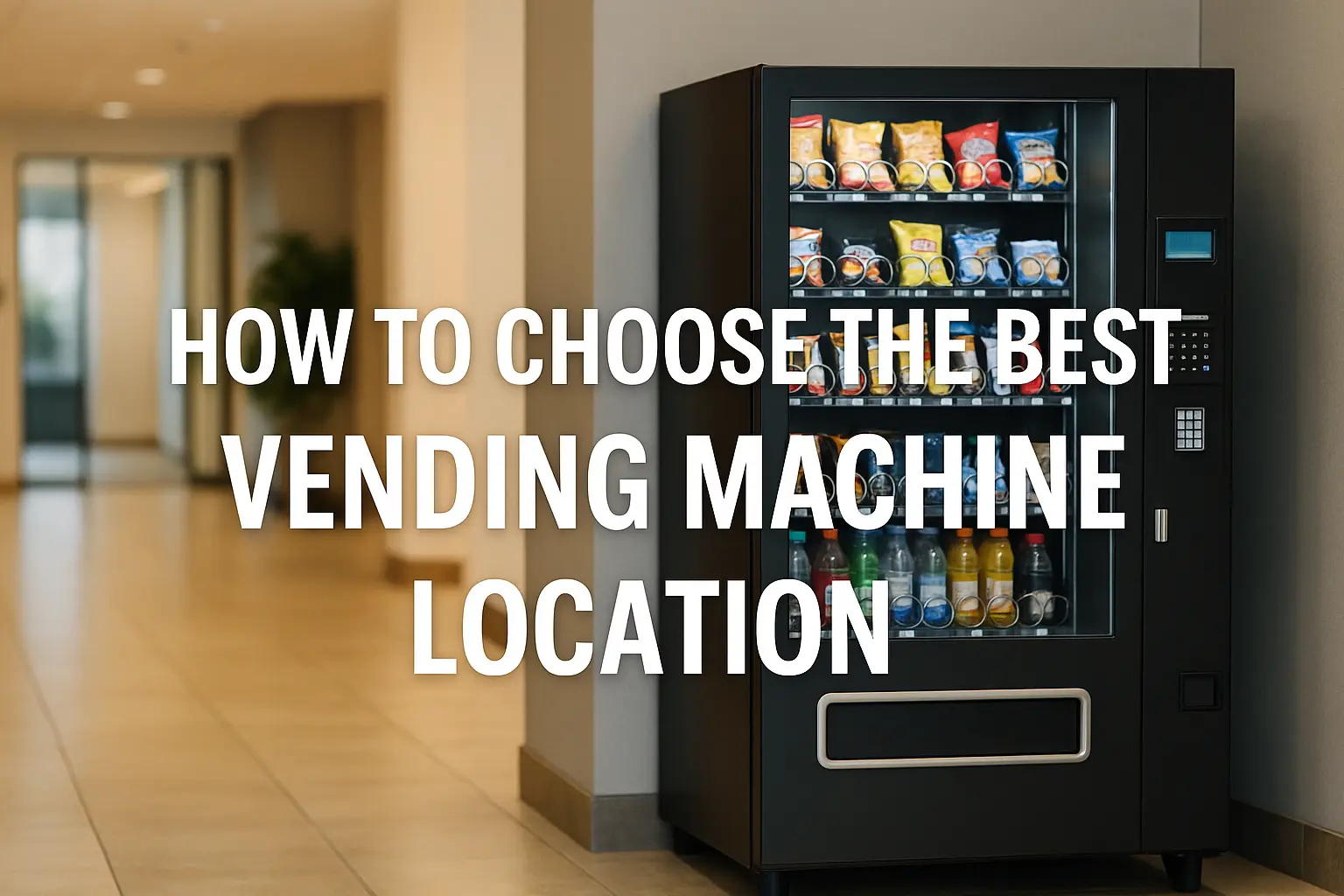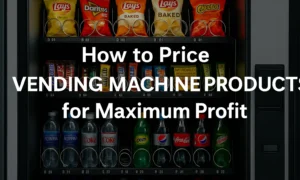A vending machine can be a steady stream of income — but only if it’s placed in the right location. Even the most advanced machine stocked with top-selling snacks or beverages can fail miserably if it’s hidden in a low-traffic area. On the other hand, an average machine in the perfect spot can bring consistent profits month after month.
Choosing a vending machine location isn’t guesswork. It’s about understanding people, behavior, accessibility, and visibility. In this guide, you’ll learn how to identify the best possible places, what mistakes to avoid, and how to ensure your vending business runs successfully across the United States.
Why Location Matters More Than Anything?
When it comes to vending, location is everything. Your machine’s performance depends on how many people walk past it, how visible it is, and how well it matches the needs of the audience in that area.
Think of your vending machine like a miniature store that operates 24 hours a day. A traditional store chooses its location after months of study — you should do the same. The right spot means more convenience for customers, better exposure for your products, and ultimately, more profit.
Understanding Your Ideal Customer
Before searching for locations, define who your customers are. A vending machine in a corporate office has a completely different audience than one placed in a gym or college dorm.
If your products include snacks, bottled drinks, or coffee, you’ll perform best in places where people take short breaks — offices, hospitals, schools, or transportation hubs. Machines offering healthier options or protein-based items fit better inside gyms or fitness studios.
Understanding your customer’s daily routine helps predict when and why they’ll buy from your machine. Are they grabbing something quick before work, looking for hydration after a workout, or snacking between classes? Once you know that, you can pick locations that align perfectly with those needs.
How to Research Potential Locations
Location scouting starts with observation. Visit different neighborhoods and watch where people naturally gather or wait. Lobbies, corridors, and entrances often have the highest visibility. Check how crowded these areas are during peak hours and whether there’s space for your machine without blocking traffic.
You can also use digital tools like Google Maps to locate office complexes, hospitals, apartment buildings, or gyms near you. Walk through these sites, talk to facility managers, and see if they currently have vending machines or might consider adding one.
Some of the best locations in the U.S. for vending machines include hospitals, schools, transportation centers, apartment complexes, shopping malls, corporate offices, and manufacturing plants. These spots have consistent daily traffic and a mix of people who want quick, convenient access to food and beverages.
Evaluating the Strength of a Location
When you find a possible spot, take time to evaluate it carefully. Don’t decide based only on foot traffic — not every busy area converts into good sales. Look at how long people stay there. Waiting areas, lounges, and building lobbies work better than hallways where people simply walk past.
Check how visible your machine would be. If it’s hidden behind furniture, pillars, or walls, customers won’t notice it. Make sure it’s in a well-lit, easily accessible space that feels safe even at night.
Consider the practical side too:
- Is there a power outlet nearby?
- Can you easily restock and service the machine?
- Is the area clean and protected from extreme heat or humidity?
All these small details add up to a big difference in your vending performance.
Talking to Property Owners or Managers
Once you’ve selected a few promising sites, reach out to property owners or facility managers. Explain how having a vending machine benefits them — it adds convenience for employees, visitors, or residents, and it requires very little maintenance on their part.
Be professional when you approach them. Prepare a simple proposal explaining your product types, your commitment to keeping the area clean, and your plan for restocking. You can also offer a commission or rent payment to make the deal attractive.
Most successful operators suggest offering a short trial period, such as three to six months. This gives both sides a chance to see how the machine performs before signing a long-term contract.
After Installation: Monitor and Adjust
The real work begins after installation. Keep track of which products sell fastest and which ones don’t move. Swap low-performing items for something new. Seasonal changes can also affect sales — cold beverages in summer, hot drinks in winter.
Modern vending machines often come with software that tracks sales in real time. Use this data to your advantage. You’ll know exactly when to restock, what sells best, and which times of day bring the most purchases.
Maintenance is another key factor. A broken or empty machine quickly loses customer trust. Make sure it’s always clean, stocked, and in working condition.
Common Mistakes to Avoid
Even experienced operators can make location mistakes. Avoid these pitfalls:
- Skipping permission: Always get written approval before placing a machine anywhere.
- Focusing only on traffic: A crowd doesn’t guarantee sales if the products don’t fit the audience.
- Ignoring competition: If there’s already a snack bar or another machine nearby, your profits may shrink.
- Choosing unsafe or poorly lit spots: Machines in dark corners are targets for vandalism.
- Neglecting restocking: Empty machines mean lost revenue and disappointed users.
- Ignoring regulations: Some U.S. states or cities have vending-specific permits or tax rules — check before installation.
Every mistake can cost you money or even your placement. Taking a little extra time during research and setup prevents bigger problems later.
Tips for Long-Term Success
To keep your vending business growing, treat every machine like a living asset. Revisit each location every few months to see how it’s performing. If sales drop steadily, consider relocating.
Build relationships with property owners. When you prove reliable and easy to work with, they’ll often let you add more machines in other parts of their property or refer you to other businesses.
Also, stay flexible with your product mix. As trends change, update your offerings. Adding contactless payments, promoting new products, or using digital displays can make your machine stand out and attract more buyers. Aways put the customer first. Make sure the experience is smooth, fast, and convenient. That’s the kind of service that earns repeat business.
Why the U.S. Market Offers Huge Potential
The vending industry in the United States is evolving fast. Modern machines accept cashless payments, sell fresh food, and even dispense electronics or beauty items. With busy lifestyles and growing demand for convenience, vending continues to thrive in offices, schools, transportation centers, and residential areas.
The secret isn’t in owning hundreds of machines — it’s in mastering placement. Once you understand your audience and can recognize profitable spots, you can scale confidently.
Final Thoughts
Finding the perfect location for your vending machine takes time and effort, but it’s worth it. Every step — from researching traffic patterns to negotiating contracts — contributes to long-term success.
A well-placed machine can deliver consistent income for years, while a poorly placed one can drain your resources. Focus on visibility, accessibility, and customer fit. Keep monitoring results, stay adaptable, and continue refining your strategy.
The vending business rewards those who think strategically. Get your first location right, and it’ll set the foundation for everything that follows.






























































